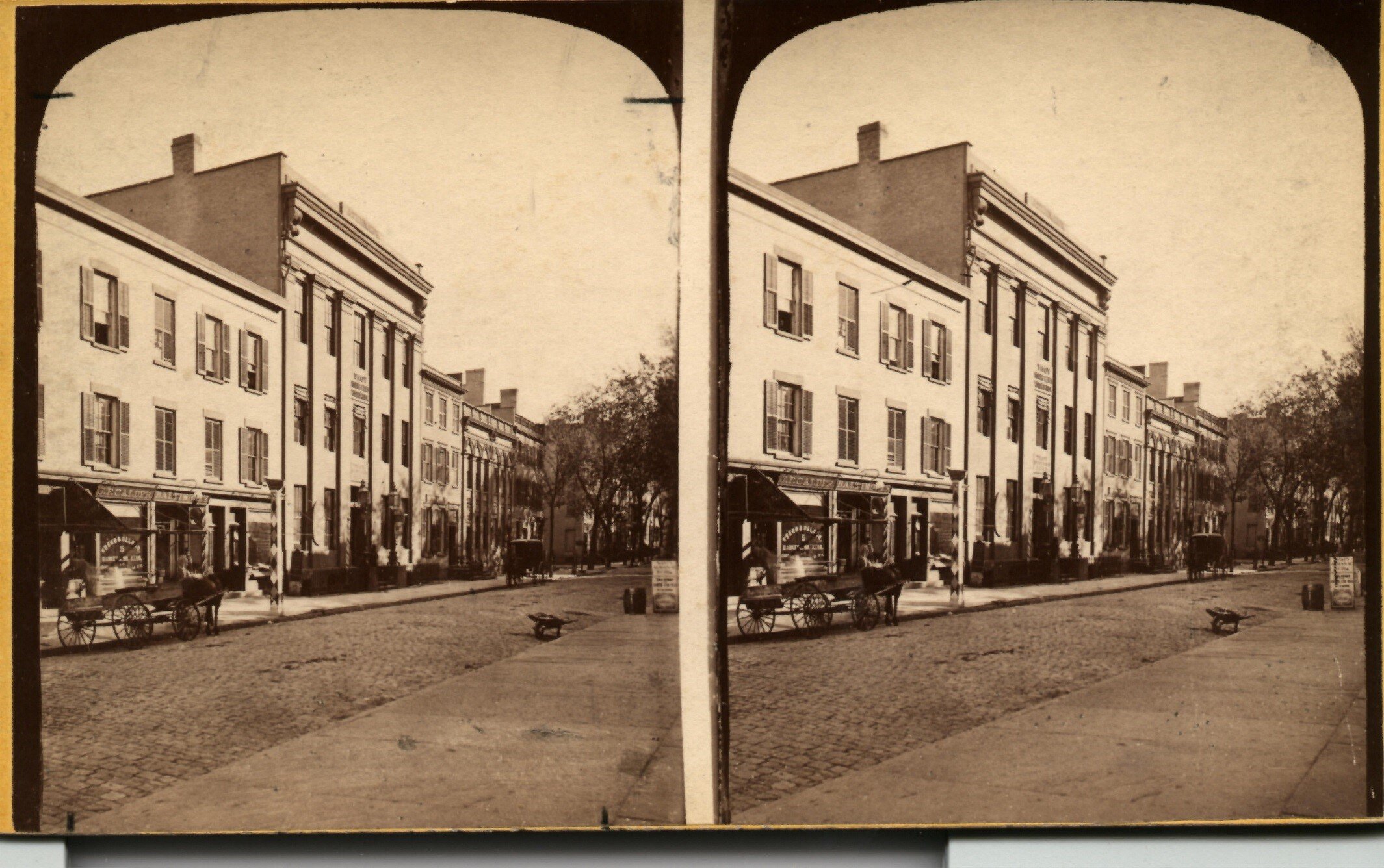Peter Baltimore - A Life
Peter Baltimore was a barber and his barber shop, located on First Street, was a documented part of the Underground Railroad.
Peter Baltimore’s Barbershop and the Athenaeum, photograph from a stereoview card, c. 1880.
Located on the east side of First Street, between Broadway and State Street, the buildings in the photographs (right) played an important role during the abolitionist period in Rensselaer County from 1820 until 1860.
Just out of range on the left side of the photo next to the Baltimore barbershop stood the Troy House, an early Troy hotel (site of today’s senior housing apartments). As mentioned in previous posts, Peter became a barber and his barber shop on First Street was a documented part of the local underground Railroad system. Through the efforts of Peter Baltimore and William Rich, freedom seekers wishing to stay in Troy were given jobs as porters and waiters at the Troy House. The Troy Savings Bank was first housed in the Athenaeum located just south of Peter’s barbershop as were several of the benevolent societies such as the Female African Benevolent Society.
Peter Baltimore also played an important role behind the scenes in freedom seeker Charles Nalle’s rescue in 1860, working with others to raise the money to buy Nalle’s freedom in the days after his escape from those who tried forcibly to take him back south. Peter and his wife, Caroline Newcomb Baltimore (d. 1891), had four children and lived on 8th street - their first home was destroyed in the Great Fire of 1862, but they rebuilt, and the family owned the property into the mid-20th century.
Print, Troy House, c. 1830s
Peter F. Baltimore’s signature from his will, dated 1906



